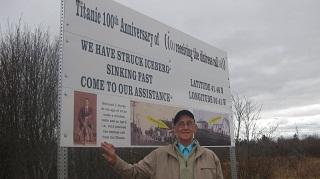Rotary Bulletin - April 5, 2012 - Titanic
Remembering the Titanic

RMS Titanic was a passenger liner that sank in the North Atlantic Ocean on 15 April 1912 after colliding with an iceberg during her maiden voyage from Southampton, UK to New York City, US. The sinking of Titanic caused the deaths of 1,514 people in one of the deadliestpeacetime maritime disasters in history. She was the largest ship afloat at the time of her maiden voyage.

Distress signals were sent by wireless, rockets and lamp, but none of the ships that responded were near enough to reach her before she sank.
The disaster was greeted with worldwide shock and outrage at the huge loss of life and the regulatory and operational failures that had led to it.

The wreck of Titanic remains on the seabed, gradually disintegrating at a depth of 12,415 feet (3,784 m). Since its discovery in 1985, thousands of artefacts have been recovered from the sea bed and put on display at museums around the world. Titanic has become one of the most famous ships in history, her memory kept alive by numerous books, folk songs, films, exhibits, and memorials.
This add-on to today's bulletin was inspired by Pam Harrison who provided the idea, and the pictures. Thanks, Pam!
Factual information provided by Wikipedia.com
Download the website sponsorship guide

